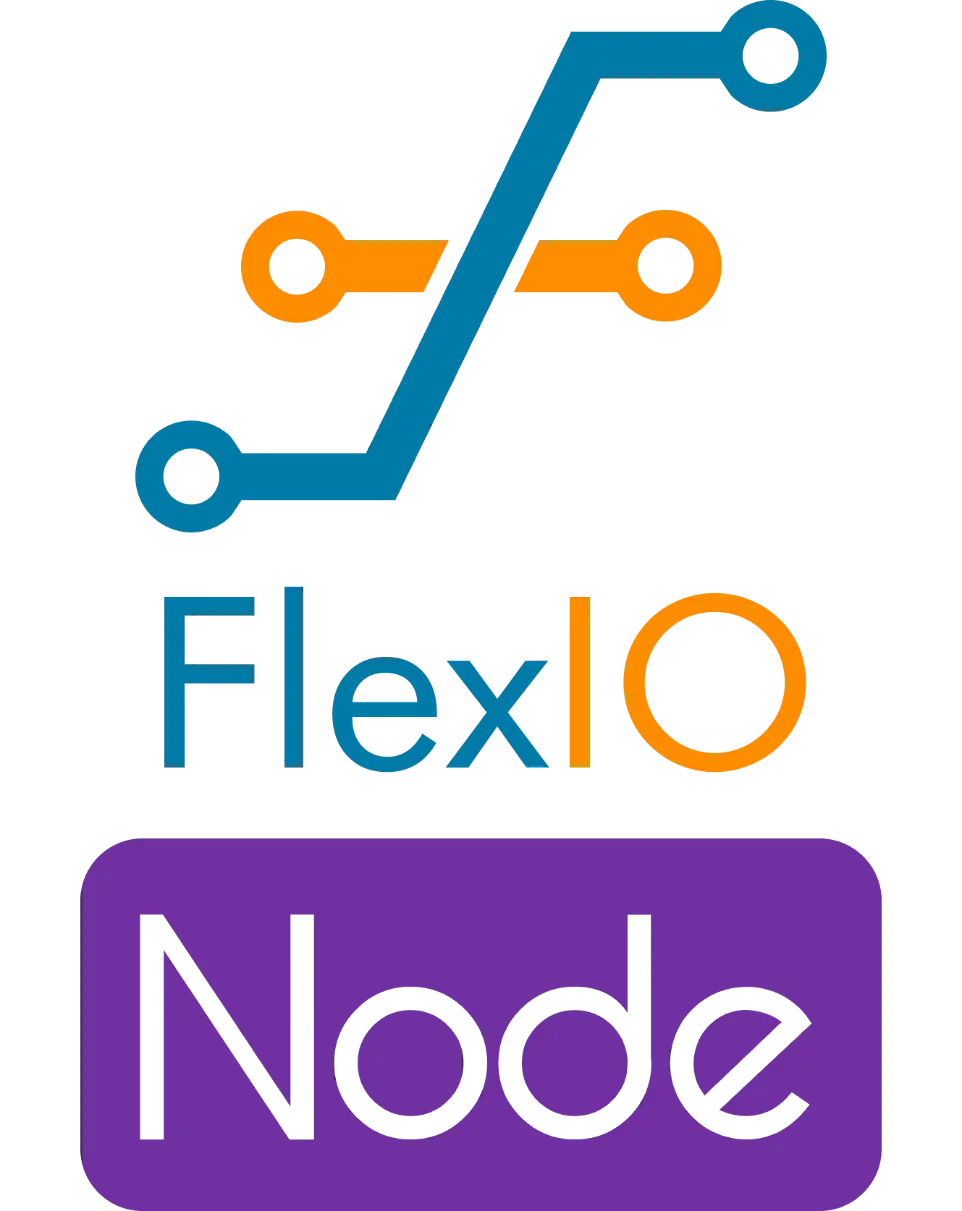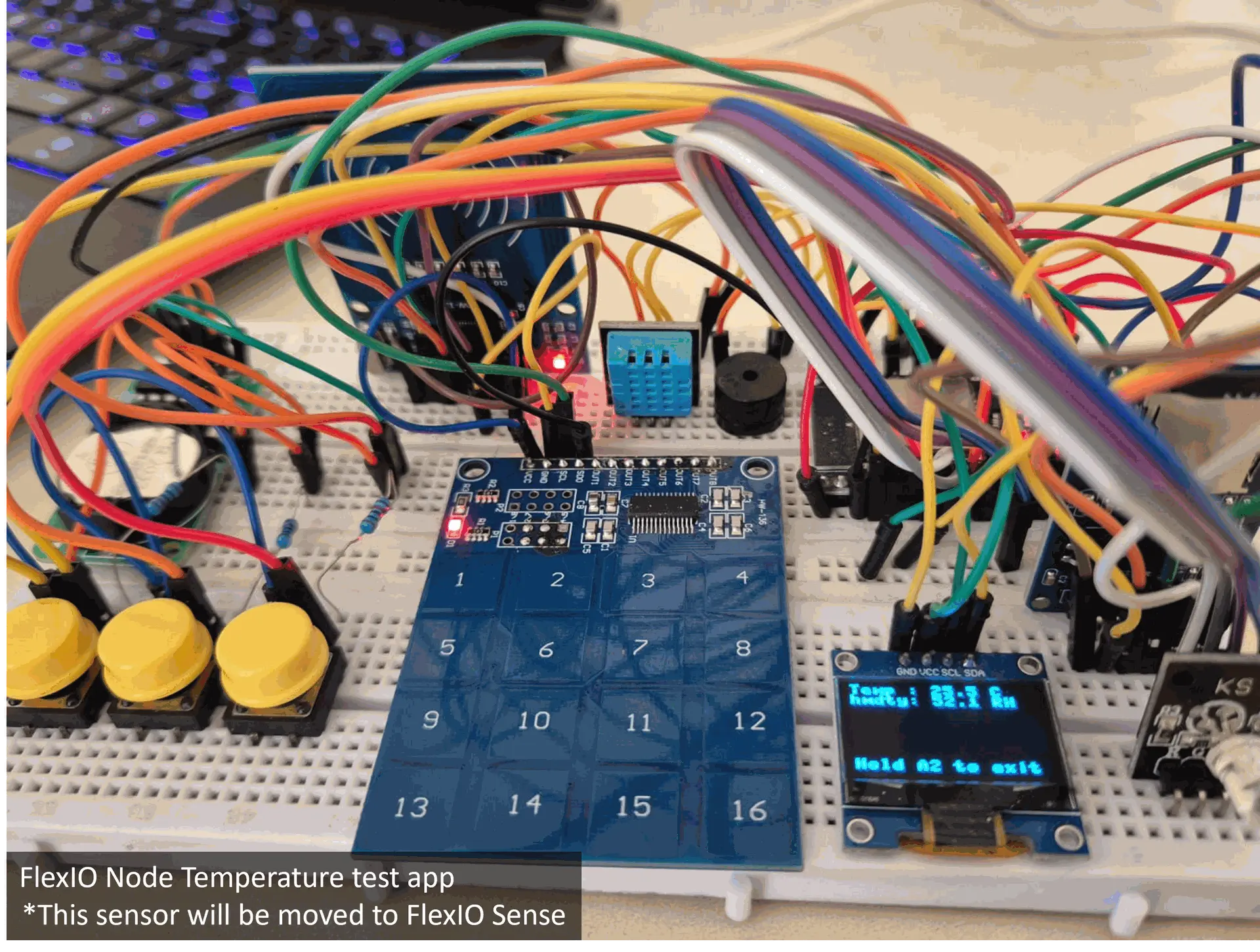Flexible-Input-Output
FlexIO system is under active development. our current efforts are directed towards PCB prototyping. As the development team is in the middle of examinations, development efforts have slowed down. We will pick up the pace after examinations are over.
FlexIO is a groundbreaking modular device ecosystem, predominantly designed to revolutionize user interaction and data sensing. It comprises FlexIO Node, a versatile user I/O hub, and FlexIO Sense, a cutting-edge sensor platform. FlexIO Sync combines the strengths of FlexIO Node and FlexIO Sense, delivering unmatched flexibility, seamless integration, and unparalleled adaptability for diverse applications, from automation to monitoring and control.
At the heart of FlexIO is FlexOS, a powerful and flexible firmware designed in MicroPython. Whether you're using FlexIO Node or FlexIO Sense, the core OS remains consistent, with modular components that adapt to the connected hardware. FlexOS simplifies app creation, making it accessible even to users with no electronics expertise, while retaining advanced capabilities for power users. Its dynamic architecture allows users to add or remove modules effortlessly, ensuring a tailored experience for various applications.
Versatile Ecosystem
Adaptable for every project need.
Powerful Software
Simplified software, powerful control.
Seamless Integration
Unified systems, effortless communication.
Highlights
Key features of FlexIO system.
User-friendly I/O Interface
Intuitive controls for interacting with buttons, displays, and RFID sensors.
Modular Hardware Design
Easily add or remove components based on specific user needs.
Multiple App Support
Create and load multiple apps for various use cases.
Addional Benefits
How we are different.
Wireless Communication
Enables seamless data exchange via protocols like ESP-NOW for inter-device connectivity.
Expandable Sensor Network
Easily integrate sensors like gyroscopes and heart rate monitors.
Real-time Data Processing
Instant response to user commands and sensor inputs.

Versatile Device for Basic Needs
FlexIO Node is a general-purpose device designed to handle basic user input and control. It connects and manages components like displays, buttons, and sensors, offering a flexible platform for diverse applications. Powered by FlexOS on the ESP32, it simplifies integration and customization.

Unified Control for All Devices
FlexIO Sync combines FlexIO Node and FlexIO Sense into one cohesive system. Using ESP-NOW, it ensures synchronized data exchange between I/O and sensor modules. This enables seamless communication and centralized control, allowing for efficient management and data integration across both components.

Sensors for Advanced Data
FlexIO Sense collects and manages data from various sensors, such as temperature, motion, and heart rate. It processes real-time data, making it ideal for applications that require detailed sensor information and dynamic responses.

Unified Control for All Devices
FlexIO Sync combines FlexIO Node and FlexIO Sense into one cohesive system. Using ESP-NOW, it ensures synchronized data exchange between I/O and sensor modules. This enables seamless communication and centralized control, allowing for efficient management and data integration across both components.
Modules supported
Wireless protocols supported
Possible combinations
Optional Components Suported
- Active Buzzer
- Passive Buzzer
- DS1302 RTC module
- Tri-color LED
- WS2812B Addressable LED
- MFRC522 RFID sensor
- TTP229_BSF keypad (Only 16 key, single mode supported)
- DHT11 Temperature & Humidity sensor
- Light dependent resistor
- HCSR04 Ultrasonic sensor
- PIR sensor
- MPU6050 Accelerometer and Gyroscope
Wireless Protocols Suported
- Wi-Fi
- Bluetooth
- ESP-NOW
*These components are going to be integrated into FlexOS soon.
Few words from the creator
- FlexIO began as a learning project. At first, there was no clear purpose—just an ESP32, hardware, and Python scripts for experimentation. The breakthrough came when we successfully loaded external scripts, laying the foundation for what would eventually evolve into FlexIO.
- Initially, it wasn’t called FlexIO. Over time, the hardware and scripts naturally evolved into a modular system we now call FlexOS. This modularity became FlexIO’s core strength, allowing it to adapt to different hardware and use cases with ease.
- To extend FlexIO’s capabilities, we proposed FlexIO Sync, a system utilizing ESP-NOW for seamless communication between devices. This led to the creation of FlexIO Sense, a sensor-focused system, while FlexIO Node retained its I/O functionality. Together, these systems will form a powerful, interconnected ecosystem.
- FlexIO’s journey continues as we integrate more features and capabilities. By learning, innovating, and pushing boundaries, we aim to deliver a system that empowers users with simplicity, flexibility, and endless possibilities for their projects.
Timeline
15, 2024
MicroPython Kickoff
Took the first steps in setting up MicroPython on the ESP32 for learning.
20, 2024
FlexIO Foundation
Set up the new ESP32 board with MicroPython to start building FlexIO. Later renamed to FlexIO node.
25, 2024
Hardware Hurdles Conquered
Finalized and tested all hardware components.
31, 2024
FlexIO V1: Ready for Action
Final software made and tested successfully
2, 2025
Syncing with the Future
Established collaboration with a friend to link two FlexIO devices together. Turning FlexIO into a multi system project.
3, 2025
Project FlexIO: Official!
FlexIO was approved by the college to be presented at various exhibitions and competitions.
3, 2025
FlexOS Redesign
Redesign of FlexIO firmware, FlexOS, was started with the aim of making a flexible OS with modular capabilities.
11, 2025
FlexIO Sync Achieved
Successfully synced FlexIO Node and Sense. Commands can now be sent between them.
13, 2025
FlexIO Sense Hardware Finalized
Finalized and tested all hardware components FlexIO Sense.
15, 2025
FlexOS 2.0 Completed
The redesign of FlexOS is now complete. The updated version includes advanced handling mechanisms to enhance stability and prevent crashes under various conditions. Additionally, it features built-in apps for managing and configuring the OS with ease.
More to come soon...
Meet the team
Students

Ujjawal Sharma
Team Leader, Second Year Student
B.Tech Electronics & Communication Engineering, The CVM University, Vallabh Vidyanagar, Anand

Dhwani Patel
Second Year Student
B.Tech Electronics & Communication Engineering, The CVM University, Vallabh Vidyanagar, Anand
Mentor

Dr. Hitesh Shah
Professor & Head
Department of Electronics & Communication Engineering, G.H. Patel College of Engineering and Technology, The CVM University, Vallabh Vidyanagar, Anand

Dr. Bhaskar Thakkar
Professor
Department of Electronics & Communication Engineering, G.H. Patel College of Engineering and Technology, The CVM University, Vallabh Vidyanagar, Anand



